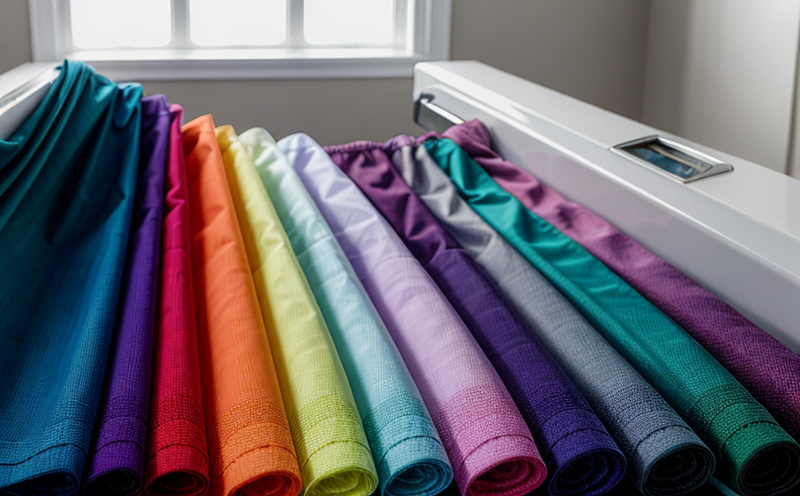Impact of fabric blend on colorfastness to washing
The Impact of Fabric Blend on Colorfastness to Washing Why It Matters for Your Business
As a manufacturer or retailer of textile products, you understand the importance of ensuring that your fabrics retain their color and quality even after repeated washing cycles. This is where the concept of colorfastness comes into play a critical factor in determining the durability and performance of your fabrics. In this article, we will delve into the impact of fabric blend on colorfastness to washing, highlighting the benefits of testing this parameter through our expert laboratory services at Eurolab.
What Is Colorfastness?
Colorfastness refers to the ability of a fabric to resist fading or color change when exposed to various forms of stress, including light, water, and mechanical wear. This property is crucial in ensuring that your textile products maintain their appearance and quality over time, thereby extending their lifespan and minimizing the need for frequent replacements.
Why Is Colorfastness Important?
In todays competitive market, manufacturers and retailers must prioritize colorfastness to guarantee customer satisfaction and loyalty. Here are some compelling reasons why
Cost Savings By ensuring that your fabrics retain their color and quality, you can significantly reduce costs associated with product replacement, re-manufacturing, or even worse costly lawsuits.
Brand Reputation Maintaining high-quality textiles reflects positively on your brand image, fostering customer trust and loyalty. Conversely, subpar products can irreparably damage your reputation.
Compliance Meeting colorfastness standards is essential for regulatory compliance in various industries, such as fashion, upholstery, or home textiles.
Product Innovation By analyzing the impact of fabric blend on colorfastness, you can optimize product designs to meet specific market demands and preferences.
The Impact of Fabric Blend on Colorfastness
Fabric blends are an integral component of textile production, offering unique benefits such as improved durability, comfort, or aesthetics. However, these blends also introduce complexities that can affect colorfastness
Material Interactions Different fibers exhibit varying levels of reactivity when combined, potentially leading to unpredictable changes in colorfastness.
Yarn Dyeing The dyeing process itself can be influenced by the fabric blend, resulting in inconsistent colorfastness performance.
Post-Dyeing Treatments Certain treatments or finishes applied to the fabric may interact with the fibers, compromising colorfastness.
Advantages of Testing Colorfastness Through Eurolab
At Eurolab, our comprehensive laboratory services cater to your specific needs by providing accurate and reliable results. Here are some key benefits
Expertise Our team of experienced technicians and chemists ensure that each test is conducted with the utmost care and precision.
Customized Solutions We offer tailored testing protocols to suit your unique requirements, taking into account factors such as fabric type, dyeing method, or post-treatment processes.
Accurate Results Our state-of-the-art equipment and rigorous quality control measures guarantee reliable results that you can trust.
Timely Delivery We understand the importance of timely results, ensuring that you receive your reports promptly to meet your project deadlines.
QA Section
Here are some frequently asked questions regarding the impact of fabric blend on colorfastness to washing
What is the significance of testing colorfastness in textile production?
Testing colorfastness is crucial for ensuring that fabrics retain their appearance and quality over time, thereby minimizing costs associated with product replacement or re-manufacturing.
How do I choose the right fabric blend for my product?
Consider factors such as material interactions, yarn dyeing, and post-dyeing treatments when selecting a fabric blend. Consult our experts at Eurolab for guidance on optimizing your blend for optimal colorfastness performance.
What are the consequences of neglecting colorfastness in textile production?
Neglecting colorfastness can lead to costly product failures, damage to brand reputation, and non-compliance with industry regulations.
Conclusion
In conclusion, understanding the impact of fabric blend on colorfastness to washing is vital for manufacturers and retailers seeking to ensure customer satisfaction and loyalty. By leveraging the expertise and resources provided by Eurolab, you can optimize your textile products to meet specific market demands while minimizing costs and risks associated with colorfastness failures.
Contact us today at eurolab(mailtoinfoeurolab.com) to schedule a consultation and discover how our comprehensive laboratory services can help you achieve success in the competitive world of textiles.




